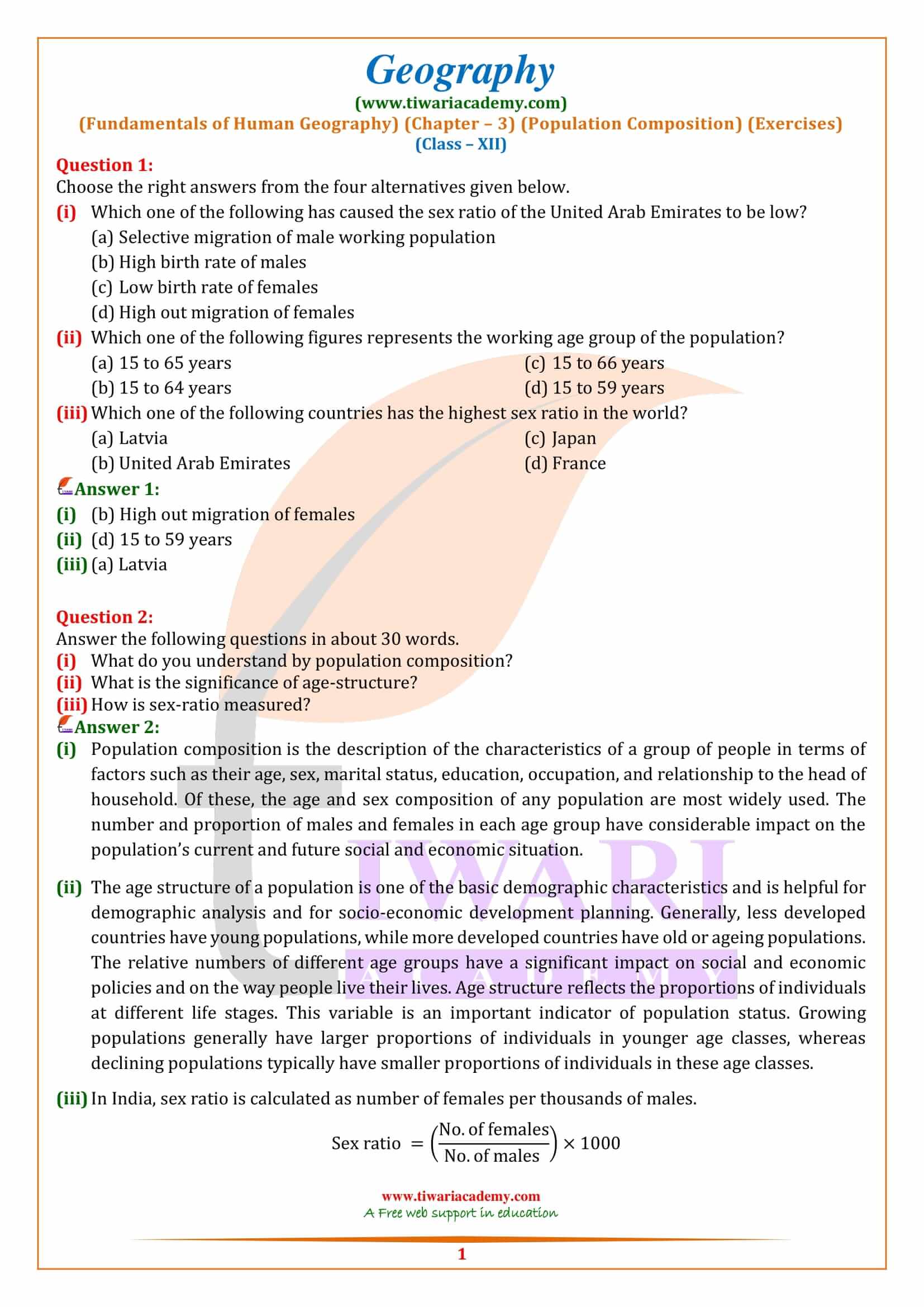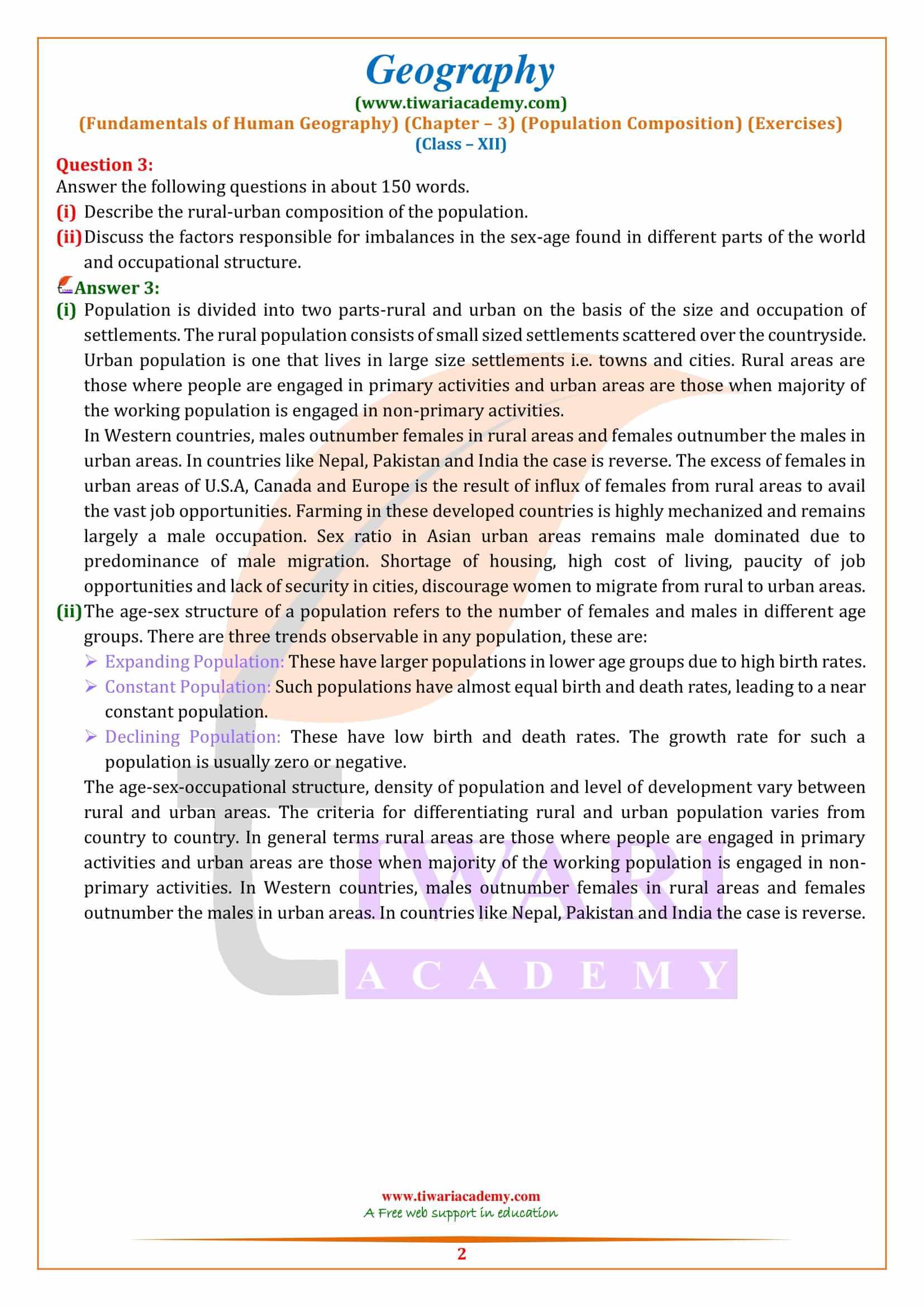NCERT Solutions for Class 12 Geography Chapter 3 Population Composition in Hindi and English Medium updated for CBSE and State board session 2025-26. Students of Class 12 Geography can take help in chapter 3 of unit 2 in Fundamentals of Human Geography with MCQ and important question answers.
NCERT Solutions for Class 12 Geography Chapter 3
Class 12 Geography Chapter 3 Population Composition Question Answers
What do you understand by population composition?
Population composition is the description of the characteristics of a group of people in terms of factors such as their age, sex, marital status, education, occupation, and relationship to the head of household. Of these, the age and sex composition of any population are most widely used. The number and proportion of males and females in each age group have considerable impact on the population’s current and future social and economic situation.
Class 12 Geography Chapter 3 MCQ
Which one of the following has caused the sex ratio of the United Arab Emirates to be low?
Which one of the following figures represents the working age group of the population?
Which one of the following countries has the highest sex ratio in the world?
What is the significance of age-structure?
The age structure of a population is one of the basic demographic characteristics and is helpful for demographic analysis and for socio-economic development planning. Generally, less developed countries have young populations, while more developed countries have old or ageing populations. The relative numbers of different age groups have a significant impact on social and economic policies and on the way people live their lives. Age structure reflects the proportions of individuals at different life stages. This variable is an important indicator of population status. Growing populations generally have larger proportions of individuals in younger age classes, whereas declining populations typically have smaller proportions of individuals in these age classes.
How is sex-ratio measured?
In India, sex ratio is calculated as number of females per thousands of males.
Sex ratio =((No.of females)/(No.of males ))×1000
Describe the rural-urban composition of the population.
Population is divided into two parts-rural and urban on the basis of the size and occupation of settlements. The rural population consists of small sized settlements scattered over the countryside. Urban population is one that lives in large size settlements i.e. towns and cities. Rural areas are those where people are engaged in primary activities and urban areas are those when majority of the working population is engaged in non-primary activities.
In Western countries, males outnumber females in rural areas and females outnumber the males in urban areas. In countries like Nepal, Pakistan and India the case is reverse. The excess of females in urban areas of U.S.A, Canada and Europe is the result of influx of females from rural areas to avail the vast job opportunities. Farming in these developed countries is highly mechanized and remains largely a male occupation. Sex ratio in Asian urban areas remains male dominated due to predominance of male migration. Shortage of housing, high cost of living, paucity of job opportunities and lack of security in cities, discourage women to migrate from rural to urban areas.
Discuss the factors responsible for imbalances in the sex-age found in different parts of the world and occupational structure.
The age-sex structure of a population refers to the number of females and males in different age groups. There are three trends observable in any population, these are:
Expanding Population: These have larger populations in lower age groups due to high birth rates.
Constant Population: Such populations have almost equal birth and death rates, leading to a near constant population.
Declining Population: These have low birth and death rates. The growth rate for such a population is usually zero or negative.
The age-sex-occupational structure, density of population and level of development vary between rural and urban areas. The criteria for differentiating rural and urban population varies from country to country. In general terms rural areas are those where people are engaged in primary activities and urban areas are those when majority of the working population is engaged in non-primary activities. In Western countries, males outnumber females in rural areas and females outnumber the males in urban areas. In countries like Nepal, Pakistan and India the case is reverse.



